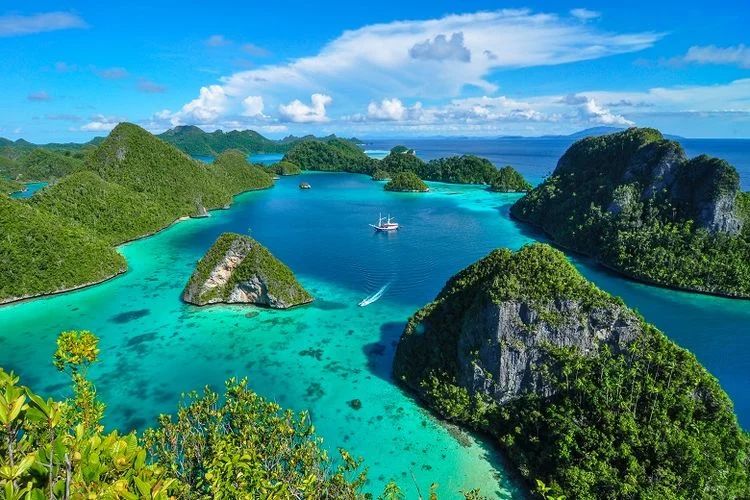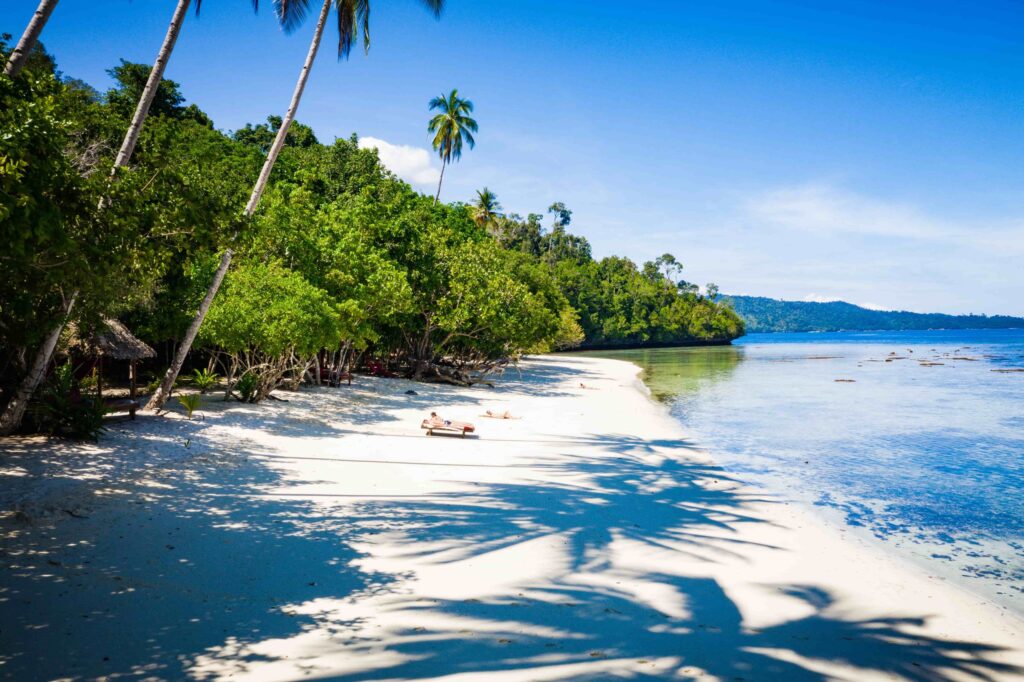Raja Ampat, located in Indonesia, is an archipelago off the northwest tip of the Bird’s Head Peninsula in the West Papua province. Known as the “Four Kings,” it comprises over 1,500 small islands, cays, and shoals, with the main islands being Misool, Salawati, Batanta, and Waigeo, along with the smaller island Kofiau. Raja Ampat is renowned for its exceptional diving experiences, pristine beaches, and coral reefs teeming with marine life. Spanning an area comparable to Switzerland, it is part of the Coral Triangle, which boasts the richest marine biodiversity on earth, making it one of the most beautiful island chains globally.
Tourism in Raja Ampat
Raja Ampat is a top-tier destination for diving, consistently ranking among the world’s best due to its unparalleled underwater biodiversity. It is also celebrated for its scenic beaches, rich marine life, and picturesque landscapes. Tourists flock to its jungle-covered islands, white sand beaches, hidden lagoons, and turquoise waters. Visitors can enjoy various activities, including snorkeling, hiking, and interacting with local communities. Despite the region’s natural beauty, around 20% of its population lives below the poverty line, with limited access to education, healthcare, and markets.
Reaching Raja Ampat involves flying to Sorong in West Papua, Indonesia, from major hubs like Jakarta, Bali, Kuala Lumpur, or Singapore, often with a stopover in Makassar Udung Padang Airport in Sulawesi. The high cost of boat travel, due to expensive fuel prices, can add to the overall trip expense.
Key Attractions and Activities
- Watch the Sunset and Sunrise: Enjoy breathtaking views at dawn and dusk.
- Snorkel at a Jetty: Experience the vibrant marine life up close.
- Hike Piaynemo: A hike offering stunning panoramic views of Raja Ampat.
- Walk on a Floating Sand Island: Discover unique sand formations in the sea.
- Feed the Fish at Sawinggrai: Interact with marine life in their natural habitat.
- Meet the Locals: Engage with the community and learn about their culture.
- Disconnect: Enjoy the tranquility and escape from modern life.
Diving Sites
Raja Ampat is home to ten renowned diving sites, including Lao Lao, Manta Ridge, Saporkren, Cape Kri, Sardine Reef, and Chicken Reef. The best time for diving is from September to April, with the calmest waters and best visibility between November and March. This period also sees a large number of manta rays at cleaning stations.
Weather in Raja Ampat Islands
The tropical climate of Raja Ampat features daily temperatures between 20°C and 33°C. The water temperature ranges from 28°C to 30°C. The region experiences unpredictable rain, more frequent in the wet season, while the dry season from October to April is the best time to visit.
Ecology
Raja Ampat is part of the Vogelkop-Aru lowland rain forests ecoregion, home to diverse wildlife including the endemic red bird of paradise and Wilson’s bird of paradise. The archipelago is a global center of tropical marine biodiversity, featuring over 600 species of hard corals, 1,700 species of reef fish, and various endangered marine mammals such as whales, dolphins, and orcas. Local communities are actively involved in turtle conservation efforts, protecting nests and relocating eggs of species like the leatherback, olive ridley, and hawksbill turtles.
Conservation Challenges
While Raja Ampat is a paradise for divers and nature enthusiasts, it faces ecological threats. The crown-of-thorns starfish poses a significant threat to coral reefs by consuming large amounts of coral, potentially leading to reef destruction. Sustainable tourism practices and conservation efforts are crucial to preserving the natural beauty and biodiversity of Raja Ampat.
Raja Ampat offers various accommodations, ranging from budget-friendly options to star-category hotels, ensuring a comfortable stay for all visitors. Despite the challenges, the region remains a top destination for those seeking unparalleled natural beauty and unique marine experiences.


